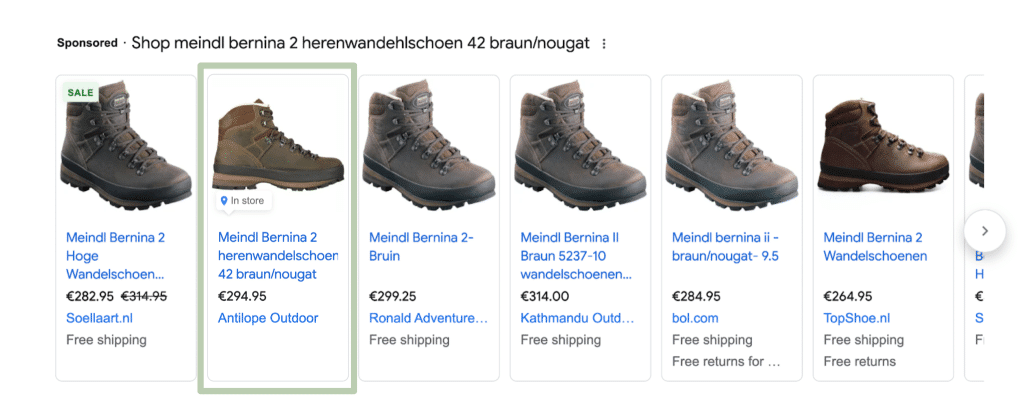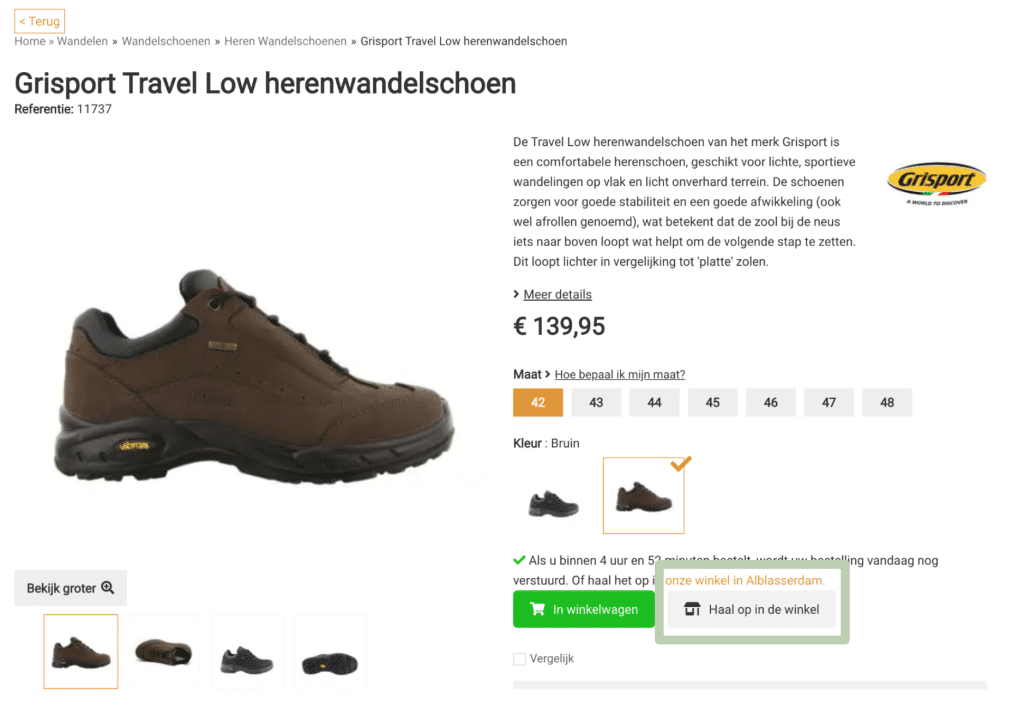Local Inventory Ads

Local inventory ads is a very interesting option for retailers who want to promote their offline offerings, within Google Shopping and Bing Shopping. This article discusses what local inventory ad is, how local inventory ads work and how to deploy it successfully.
What is local inventory ads?
Local inventory ads is a campaign setting within
Google Shopping
and
Bing Shopping
. Especially for retailers who want to promote their store inventory locally through these search engines. The moment this campaign setting is checked, an additional message such as “In store” or “store pick up” appears with the product ad. This ensures that your product listing stands out more but also makes it clear that the products are available in the store. The program has not yet been rolled out worldwide by Google and Microsoft but fortunately can already be used in the Netherlands. In the remainder of this article, we’ll take you through how it works.
How does local inventory ads work?
Local inventory ads is one of the programs you can check within the Google or Bing Merchant Center. To deploy it, the following must be done:
- Adding a supplemental product feed
- Customizing the website
Adding a supplemental product feed is necessary because your local inventory may differ from your online inventory, and there may also be differences by store here. In which the following attributes are required to be supplied: store code, id, quantity and price. Optional attributes are availability, pickup_method and pickup_sla. The advice is to use both mandatory and optional attributes.

For small retailers who have no or a very limited web shop, the recommendation is to use the Google-hosted local storefront. Other retailers, in addition to adding a supplemental feed, should also make the following changes on their websites:
- Showing the omnichannel price on your product landing page
- Show stock and address details of local store
Once that is done, the website meets the merchant hosted local storefront (basic) requirements. For retailers with multiple stores, the recommendation is to use the merchant hosted local storefront (full). To take advantage of this, some additional tweaks are needed, such as having local stock as prominent as the “buy now” button and being able to show stock by store. In the remainder of this article, we’ll take you through how to successfully deploy local inventory ads.
How do you successfully deploy local inventory ads?
Successfully deploying local inventory ads depends on what objective you have as a retailer. Small retailers often focus solely on the store, so the campaign is entirely focused on bringing as many visitors into the store as possible. Our larger retail clients deploy local inventory ads to optimize for both store visits and online purchases. To do this successfully, the following is important:
- To measure store visits, use the store visit conversion action from Google Ads, offline conversion import or a micro conversion point on the website.
- Define the value of a store visit and add it statically or dynamically (with offline conversion import) to the conversion action.
- Optimize on a conversion set that combines store visits and online transactions.
This way, the ad platforms optimize to your main goals and you get maximum benefit from local inventory ads. Want to know more about how we successfully deploy this with our clients? Then download the omnichannel marketing white paper.
Conclusion Local Inventory Ads
Local inventory ads is the way to highlight your local product inventory. It is open to retailers without a web shop and retailers with a web shop. The implementation process consists of the delivery of an (additional) product feed and optionally some modifications on the website. To then deploy it successfully, it is important that you also have Google Shopping and Bing Shopping optimized to an offline event such as a store visit. Need help implementing local inventory ads? Then contact us with no obligation!


